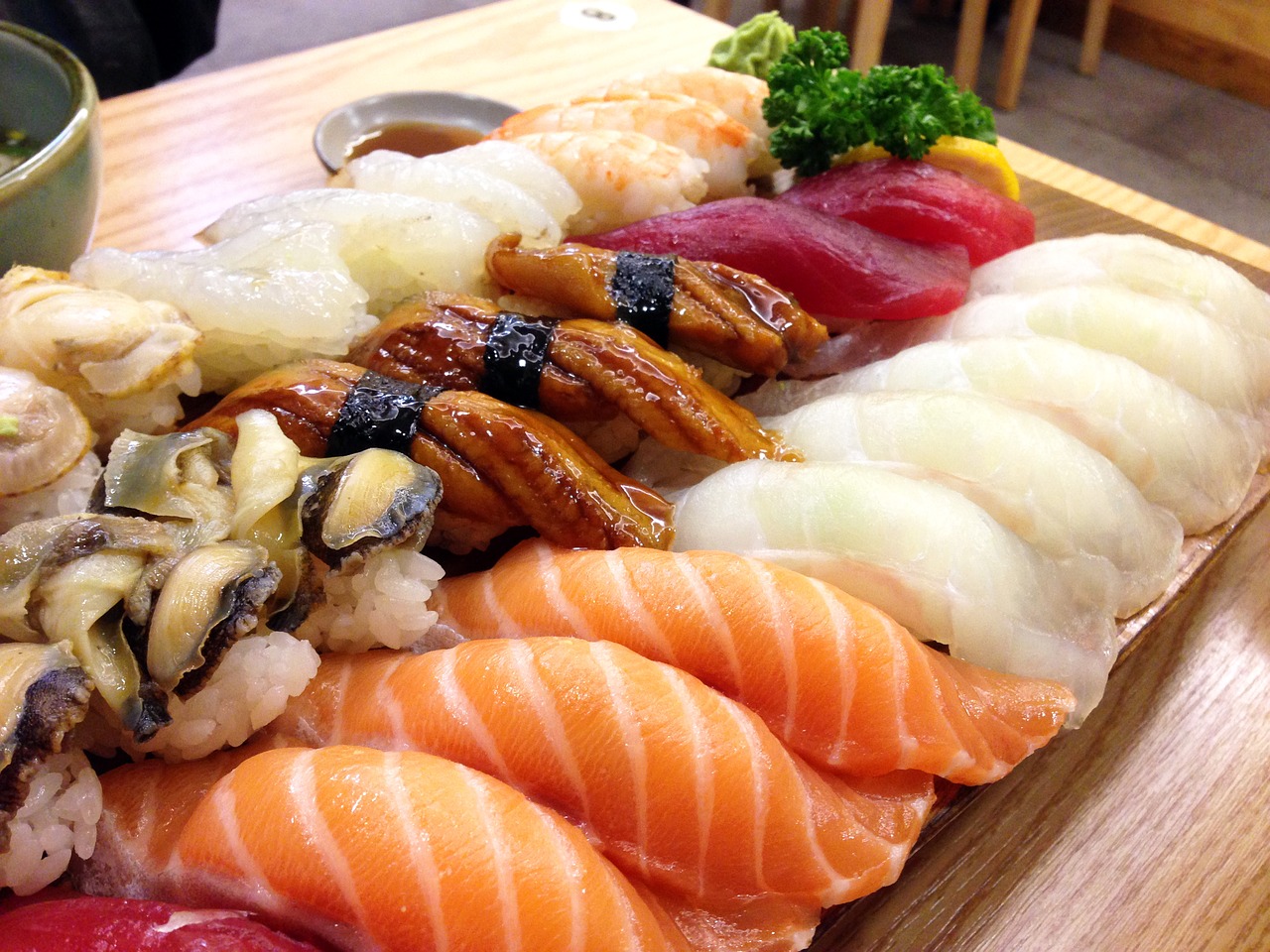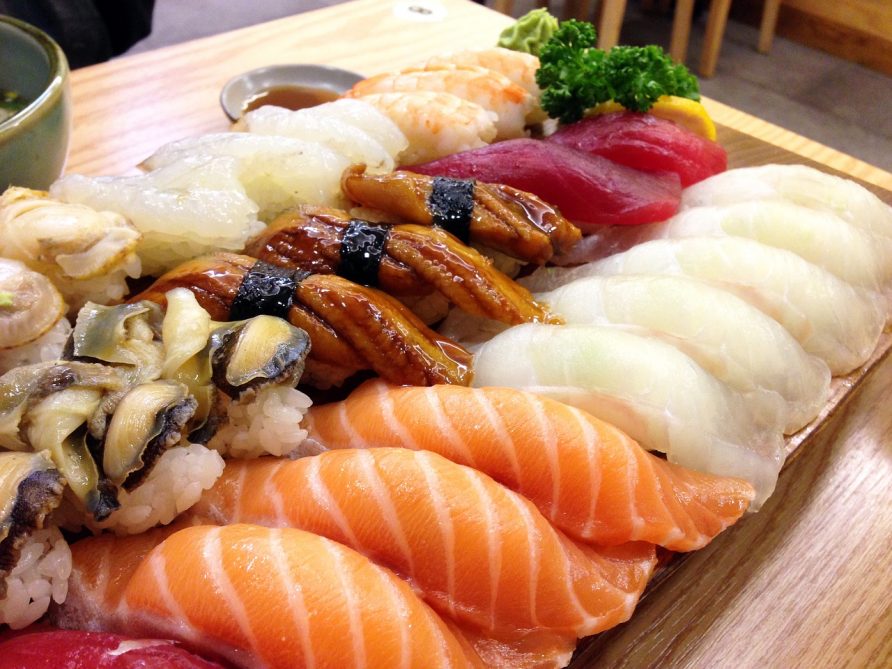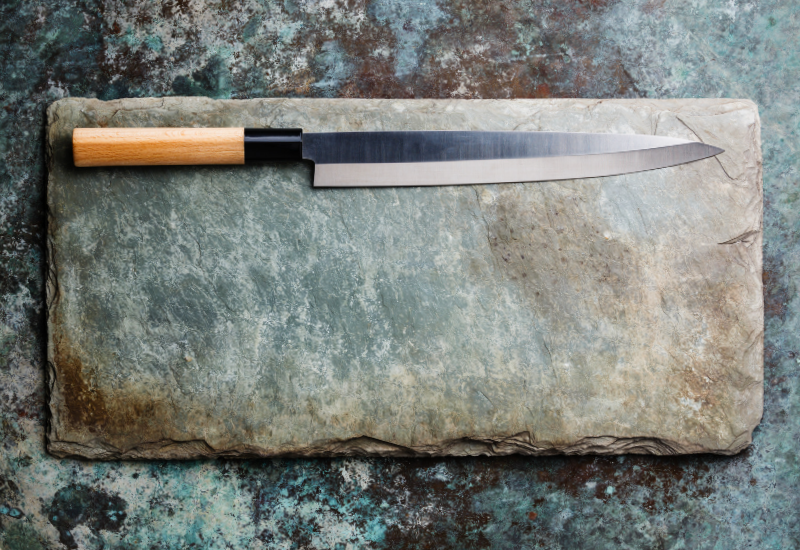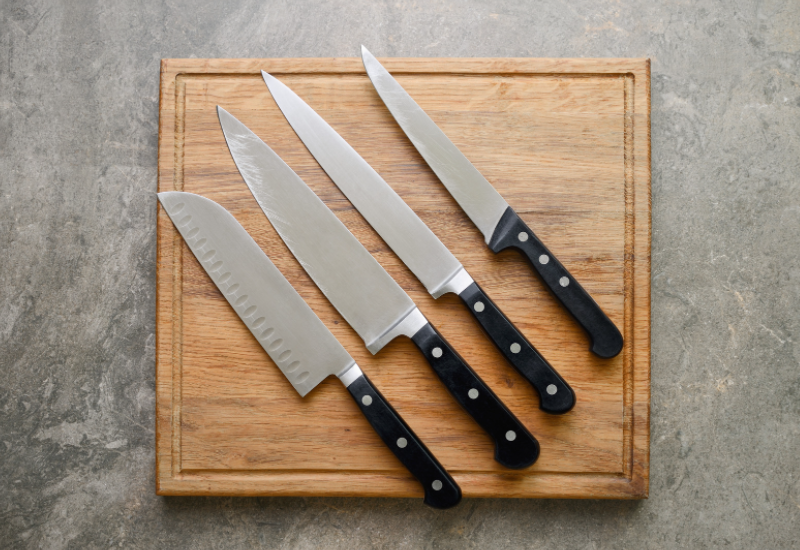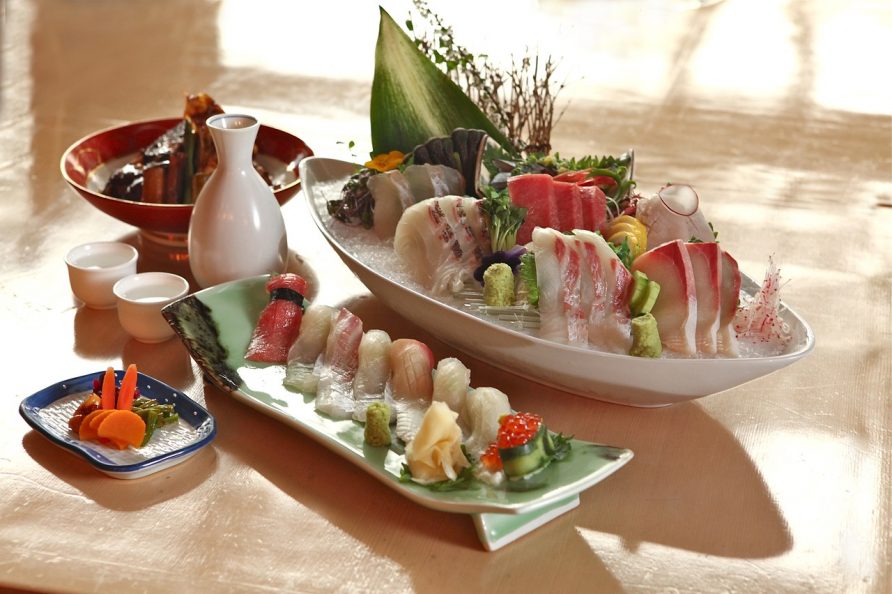In Part 2, we’ll continue talking about the omakase experience. Let’s continue below.
In omakase, every piece of personalized and prepared for you at the perfect temperature. When the food is ready, the chef will place it in front of you. It’s impolite to let the food sit for too long. Even if you’re waiting for other people to be served, always try to eat the food as soon as possible. When you pick up the sushi, don’t be surprised or intimidated if the chef stares at you while you eat. Omakase is a personalized experience, and one of the ways a chef prepares food that you enjoy is by reading your thoughts and facial expressions to adjust if you are displeased with certain types of food. Also, if you try something you don’t like, don’t be afraid to let the chef know.
Traditionally, omakaze usually begins by starting with milder-flavored fish such as hirame or sayori, before moving on to stronger, heavier tasting fish such as otoro. While this is the standard and the norm, there are omakase restaurants out there that like to serve heavier fish such as toro first. You can always research your restaurant prior to going to see how they like to serve omakase.
Omakase can be anywhere from 8 to 20 pieces of sushi. When done, the chef will let you know omakase is coming to an end. It’s rare for dessert to be served in traditional omakase, but some restaurants do serve dessert.
There are a few types of sushi you’ll see when you’re nearing the end of omakase. Some include:
- Maki, such as tekka maki
- Temaki hand rolls
- Tamago (sweet egg)
If you see any of these, it means your meal is nearing the end. After the meal, the chef will thank you and begin to tidy and clean his workspace, always keeping busy. You can now pay your check.
How does Omakase cost?
Omakase is more than just another sushi restaurant. It’s an experience, and it’s the best a chef has to offer. Expect to pay at least $50 for a basic omakase, however they are usually priced at around $100.
Tipping in Omakase restaurants
Unlike in America, if you’re in Japan, tipping is not expected. If you find yourself dining at a Japanese restaurant, you aren’t obligated to leave a tip. Today in America, non-tipping restaurants are becoming more common, especially in high-end sushi restaurants. Tipping will vary by restaurant, but non-tipping restaurants will indicate that tips aren’t required. Omakase is a unique experience which combines great food and exceptional service, therefore highly trained staff with unique skill sets and experience is required. Any tip you leave should reflect this. As with any restaurant or service, courtesy, respect, and appreciation go a long way.
How to prepare for Omakase
While it’s totally fine if you want to just show up blind and enjoy the meal, a lot of people do a bit of research prior their omakase in order to get the most out of the experience. If you decide to do research prior to attending, you’ll want to understand the different types of fish offered to see what you may or may not like. Some examples of fish typically offered include:
- Fatty fish: hamachi, salmon, toro
- White fish: hirame
- Fish eggs: ikura, tobiko
- Shellfish: uni, mirugai
- Chewy fish: tako, ika
- Cooked eel: unagi, anago
- Picked fish: saba, iwashi
Omakaze restaurants will also offer sets at different price points. Smaller sets come with up to 10 pieces of sushi, and this is considered a light meal. There are also larger meals with up to 20 pieces of sushi, and you should feel very full afterwards even if you come in feeling very hungry. Checking Google or other online review platforms is helpful for knowing what type of sushi, and how much sushi to expect for your particular restaurant.
Omakase is becoming more and more mainstream and is a a heavily use marketing term nowadays. If you want to experience a true omakaze, make sure you find a restaurant where you are able to communicate directly with the chef. If you aren’t talking directly to the chef at the bar, then it’s not a true omakaze!

